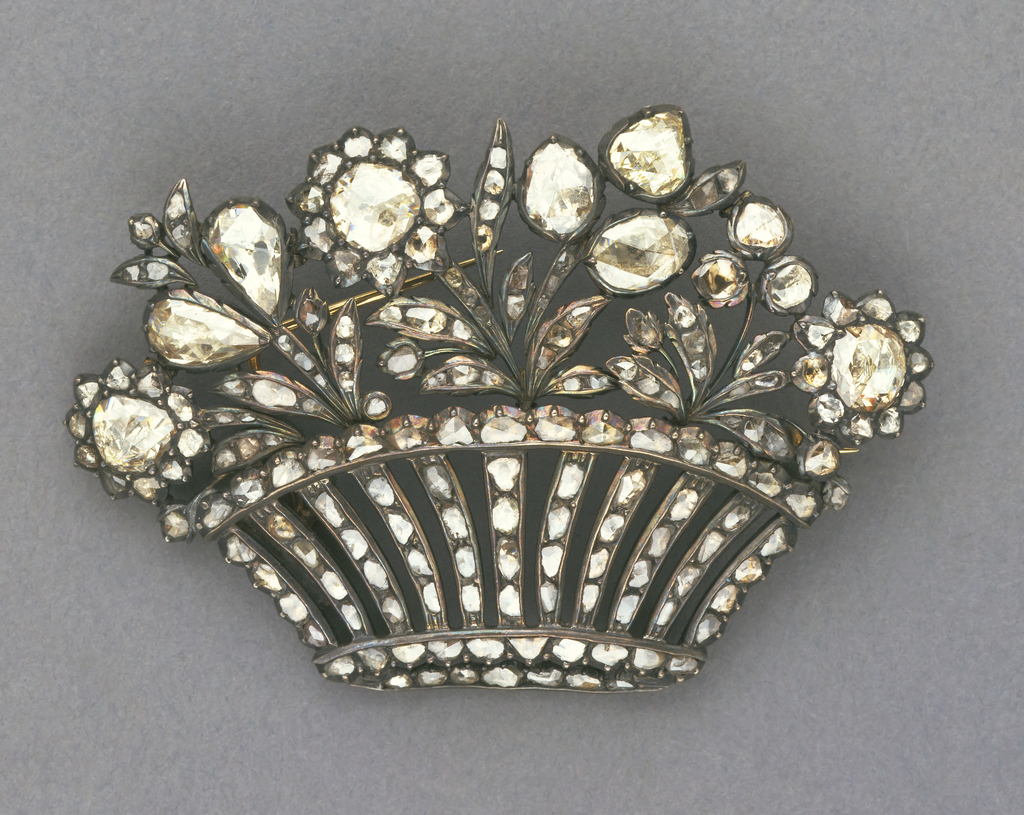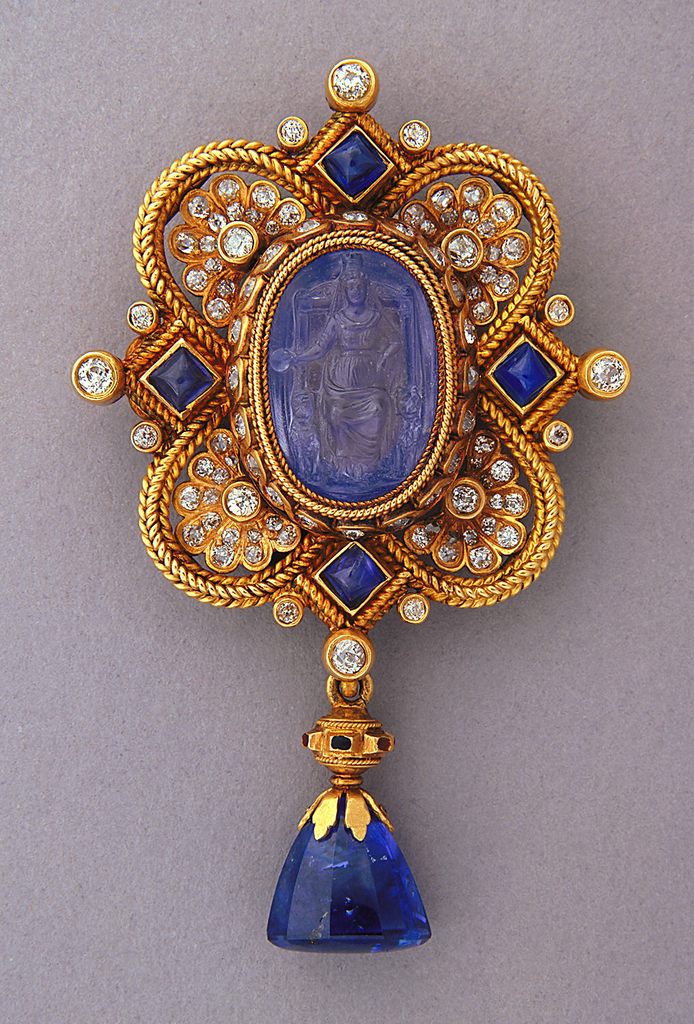This brooch of flowers in a basket is made of diamonds set in silver with a gold backing. The diamonds on this brooch are so numerous and so large that for a time, it was thought that the diamonds were fake and made up of a type of fake stone known as paste stones, which...
The Castellani jewelry firm (1814 – 1927) became known for its “Italian Archaeological jewelry,”[1] which consisted of copies and imitations of Roman, Greek, and Etruscan jewelry. The firm’s works in this style became especially popular starting in the 1850s due to a rise in nationalism as a result of efforts to unify Italy, though they...

